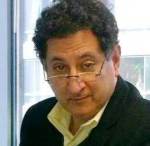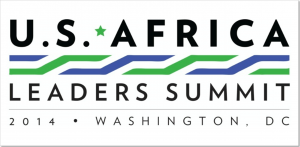Updated
After the US Africa Leaders Summit: Key Challenge is Making Good on Promises
Jean R. AbiNader, MATIC
August 21, 2014

Jean R. AbiNader, Exec. Dir., Moroccan American Trade and Investment Center
In a recent article published in Yale Global Online, Dr. J. Peter Pham, Director of the Africa Center at the Atlantic Council, concluded that “Whether [a recurring US-Africa Leaders Summit] happens or not depends on the Obama administration’s stewardship of the initiatives showcased during the summit, including the ability to work with Congress to authorize and fund projects, and also on whether the momentum of the gathering is sufficient to shift the Africa narrative in the minds of American decision makers and the general public who will influence policy and business decisions in the years ahead.”
This is the key challenge facing the Obama Administration – can it make good on the proposed initiatives announced during the Summit, or will the agenda of noteworthy programs fall prey to gridlock in Congress and a distracted Administration? Bipartisan recognition of the importance of more aggressively addressing opportunities in Africa – foreign policy and economic efforts included – was previewed in advance of the Summit by The Heritage Foundation in an issue brief, “Congress Should Upgrade the African Growth and Opportunity Act.”
Commonly referred to as AGOA, the current legislation expires September 30, 2015, and Congress is moving slowly towards renewing the law, which provides duty-free access for many African products to the US market. In return, countries are certified for AGOA eligibility if they continue progress towards a market-based economic system, implement democratic reforms including rule of law and human rights protections, and show improvement in their human development indicators. Unfortunately, AGOA only applies to sub-Saharan African countries, thus requiring another set of incentives for the Maghreb/North Africa.
Why Not Broaden the Summit To-Do List?
It is important to repeat the last point – much of what is being proposed for Africa by the Heritage Foundation and the US Government applies only to sub-Saharan Africa (SSA); and this remnant of old-school labeling of Africa ignores important trade and investment trends emerging across West and East Africa in particular. For example, as detailed in the Atlantic Council’s paper on Morocco’s multiple ties to Africa, which launched just in advance of the Summit, Morocco is broadening and deepening its historic ties to Francophone and adjacent regions of Africa through investments and trade, encouraged by King Mohammed VI as part of his economic diplomacy. But when the Heritage Foundation talks about the need to upgrade AGOA, it only looks at the African Union (AU), which has its own internal contradictions that can stand in the way of promoting greater integration of any kind.
That is not to say that Heritage’s recommendations are not critical; thoughtful analysts agree that the five goals mentioned are vital to AGOA’s success: extend AGOA for at least 10 years, encourage regional economic integration, provide additional incentives, facilitate greater bilateral private sector engagement, and support an FTA among African countries.
By not including North Africa, however, the paper overlooks key facts: Morocco is the second largest African investor in Africa; it is the only country in Africa that has an FTA with the US, which includes incentives to link with AGOA counties; it has one of the most robust transportation systems in the region; its power generation strategy complements plans for electrification of underserved areas in SSA; and its network of companies investing in Africa is an excellent conduit for foreign companies basing operations in Morocco to conduct trade and investment in Africa. Other Maghreb countries also have much to offer – from utilizing traditional south-south trade routes to encourage greater market integration and ease of the movement of goods and capital, to achieving economies of scale in the discovery, management, and transmission of hydrocarbons.
How to Make Promises into Realities
 Enacting the US-Africa Leaders post-Summit agenda depends in large part on securing support from Congress, most immediately for the AGOA renewal/expansion and funding for announced initiatives. Related, but not on the agenda, is renewing funding for EX-IM Bank, a critical cog in America’s trade and investment strategy. For example, the US has promised an additional $300 million a year to promote Power Africa – to double access to electricity across SSA. Funding is to come from EX-IM, which may disappear if Congress doesn’t act. To support US exports and investments, a new seven billion dollars in financing for the Doing Business in Africa Campaign was announced, again with no clear inclusion of North Africa. The Millennium Challenge Corporation and others will also be playing a major part in fulfilling the Administration’s promises, with no clear indication that Congress is on board.
Enacting the US-Africa Leaders post-Summit agenda depends in large part on securing support from Congress, most immediately for the AGOA renewal/expansion and funding for announced initiatives. Related, but not on the agenda, is renewing funding for EX-IM Bank, a critical cog in America’s trade and investment strategy. For example, the US has promised an additional $300 million a year to promote Power Africa – to double access to electricity across SSA. Funding is to come from EX-IM, which may disappear if Congress doesn’t act. To support US exports and investments, a new seven billion dollars in financing for the Doing Business in Africa Campaign was announced, again with no clear inclusion of North Africa. The Millennium Challenge Corporation and others will also be playing a major part in fulfilling the Administration’s promises, with no clear indication that Congress is on board.
It will be challenging for the Administration to undertake its ambitious agenda without the cooperation of the Congress; but Congress itself held a very active event with the African delegations during the Summit. So, the goodwill appears to be rising for ramping up Africa-US ties across the board. Whether or not this can be kept on track and develop sufficient momentum will be indicated first of all by Congressional actions on AGOA and EX-IM Bank. This is a defining moment in US-Africa relations, and it should include all of Africa and benefit from the experience of those who are making regional economic integration a reality.